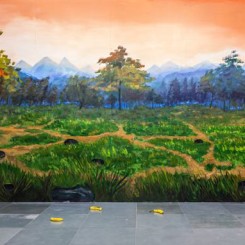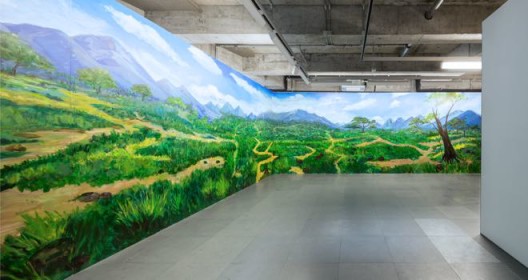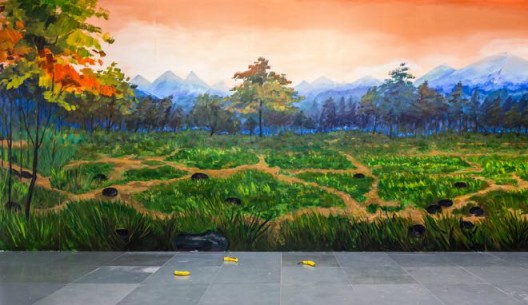Wang Wei’s “Two Rooms” opened at Edouard Malingue Gallery amid the flurry of openings fighting for attention during Art Basel Hong Kong. The show is simple and concise; one look around the room is sufficient to gauge its scope, but hidden within this simplicity is something indescribably complex. As an installation artist who has ranged over various disciplines, Wang Wei has over the years taken part in many exhibitions in China and abroad. Randian met the artist at the gallery to talk about the ins and outs of his creative practice.
Wang Wei shows me some photographs he took at the Beijing Zoo. The photos of wall art at the zoo look exactly the same as the paintings in the exhibition before us.
Wang Wei (WW): So this is what Beijing Zoo looks like. I’ve transplanted it here.
Tsao Yidi (TYD): What interests you about zoos?
WW: Zoos are man-made environments. Animals are kept in cages, but if they were kept in exhibition spaces, it’d be interesting. As time went on, the more I went to the zoo, the more I discovered. I like to think about why the zoo’s designer created each situation and environment—why one space is large while another is small, why one wall is squared off while another is semicircular. There’s a reason for everything. There are even hierarchies among the animals. For example, I assume rarer animals are treated quite well. There was a similar correlation in the wall art. Some of the paintings I did of the animals’ rooms were very rough—I finished them in half an hour. Others are very realistic, such as a painting of the hippopotamus house. If you look carefully, they’re all different. I think it has to do with how rare and precious the animal is. Some of the art in their pens are mosaics—there are even entire ponds made out of mosaic tiles because ceramic tiles are waterproof and can last a long while. So the more I went, the more I discovered.
TYD: Is every animal’s pen similar?
WW: They’re all similar, but this was based on the primate exhibit. Baboons are from Africa, so I imagine this was based on Mount Kilimanjaro. Perhaps the zoo artists did some research before doing the paintings. There were a few different landscapes; I chose a few of the more interesting ones. The landscapes are very realistic—one at dawn, one at dusk. This idea started with the current circumstances of each space, and I redesigned them. I removed the context of the zoo, forged a new type of relationship, and connected it with reality.
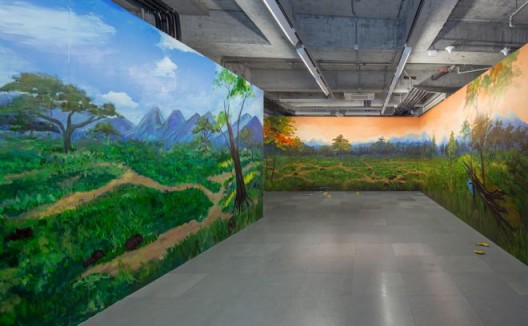
Installation view of Wang Wei, “Two Rooms”, 2015 (At Edouard Malingue Gallery, Hong Kong)
王卫《两个房间》展览现场,香港马凌画廊,2015
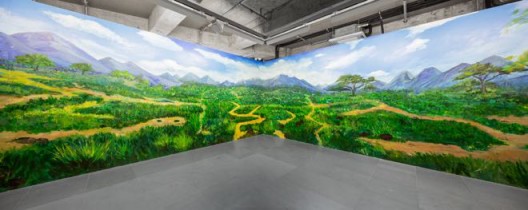
Installation view of Wang Wei, “Two Rooms”, 2015 (At Edouard Malingue Gallery, Hong Kong)
王卫《两个房间》展览现场,香港马凌画廊,2015
TYD: I had the opportunity to see your project at Observation Society in Guangzhou. Could you talk about that?
WW: That was in 2013. The concept behind it was similar to this exhibition, so this show is basically an extension. That piece was entitled “Natural History VI”. The inspiration for that also came from Beijing Zoo. Since 2007, I’ve been using elements from zoos. In 2007, there was a group exhibition at Long March Space called “NONO.” The first piece was “A Zoo, No Animals”; it replicated four nocturnal animal exhibits. The exhibition space at Long March Space is relatively dispersed. My work was placed in a central position—four small, dark rooms that the viewers had to walk through. The installations recreated a zoo-like environment. What attracted me then about this project was that by nature, zoos are replicated environments—they mimic the natural habitats of animals. So I extended this act of “replication”, replicating these false environs within an exhibition space, transforming them into art. They serve one purpose in the zoo, but when they are moved to the exhibition space, their attributes change. When viewers come…I mean, just as in a zoo, the audiences are still here to view exhibits, but the experience differs if you move from a natural setting to the zoo and then into a museum. So, my technique is about shifting the context, and thinking conceptually. I also made some adjustments and did some redesigning based on the exhibition space itself.
TYD: Is the reality you speak of the “original”? If a painting in the zoo is a copy of the Serengeti, then do you feel the “original” is the Serengeti?
WW: It is essentially an absurd situation within reality. For example, when we are in the zoo, the designer creates an environment that replicates reality based on research or his own imagination; then I borrow the visual tricks he uses.
TYD: So what you are recreating is this action of his? His act of “replicating”?
WW: You could explain it like that. There is already an existing relationship within the context of the zoo. When I borrow it for a piece of art, that relationship still exists, but it has been transformed because the context has changed—new signifiers have been added. The reference has not changed. That is to say, I have tried to preserve its original appearance to the greatest extent possible, but of course it isn’t exactly the same. For example, the pieces this time are presented more like murals, but my previous works revolved around the zoo exhibits themselves, featuring food bowls and other such items. This time I wanted to present them as painted backgrounds in the exhibition. There’s more abstracted.
TYD: Your specialization was in frescoes—how has this affected your current work?
WW: I studied fresco painting, but I wouldn’t say there’s a really direct relationship between my study and these pieces. Frescoes are an artistic manifestation—a form of public art. Frescoes are more commercial and decorative; they don’t interest me very much. I worked as a photojournalist at Beijing Youth Daily for eight years after graduating from university. It was a long time. I worked on my own projects at the same time, putting together exhibitions with friends and classmates.
TYD: You are a member of the “Post-Sense Sensibility” movement. Can you talk more about that?
WW: After I graduated, I rented a small place and began painting, creating. I lived near Liu Wei; we graduated in the same year, but he went to China Academy of Art while I went to the Central Academy of Fine Arts. We saw a lot of each other back then; he even recommended me to Beijing Youth Daily—he was an arts editor there at the time. Through Liu Wei, I eventually met Qiu Zhijie and Jiang Zhi. At the time, Qiu Zhijie was arranging a “Post-Sense Sensibility” exhibition with Wu Meichun, taking aim at the cold, conceptual work trending at the time.
I feel there were a lot of very distinct ideas behind “Post-Sense Sensibility”; we wanted to encourage young artists and visit some studios. The environment in Beijing at like…no galleries or art spaces or anything. Whenever anything happened, it was very underground. Putting these kinds of exhibitions still demanded a venue and money. Initially, we were going to have an exhibition at Cai Qing’s sister’s place, but then Cai Qing went back to Germany and never came back. Things got held up until December 1998, when we finally found a place and we were going to have the show in just two or three weeks. It was in the neighborhood where Sun Yuan was living at the time, in Shaoyaoju near the North Fourth Ring Road; one day he noticed an empty basement in that neighborhood. They asked the property management people about it, and told them he needed to make some props and set pieces for a television show down there, something like that. It was a huge basement with dozens of little rooms, but it came cheap—just one or two thousand a month. We had been planning and preparing for nearly two years, and all of the exhibiting artists were locked in. In January of 1999, we held the first Post-Sense Sensibility exhibition. I could talk about this for hours.
TYD: What exhibitions do you have coming up this year?
WW: The one I’m sure about is the Cass Sculpture Foundation exhibition in the UK in May. It will be in an outdoor space. It might not have much to do with zoos, but something to do with mosaics.
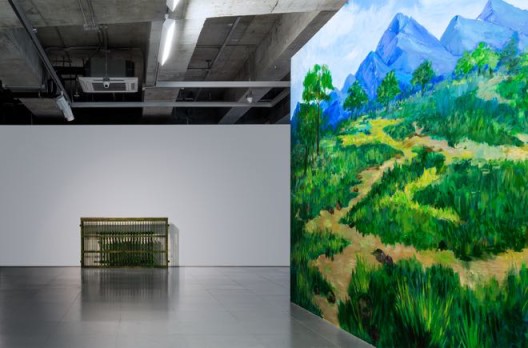
Installation view of Wang Wei, “Two Rooms”, 2015 (At Edouard Malingue Gallery, Hong Kong)
王卫《两个房间》展览现场,香港马凌画廊,2015
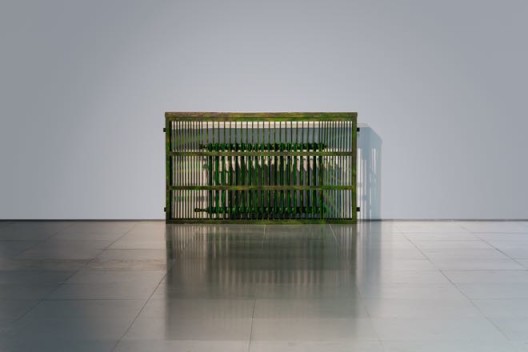
Installation view of Wang Wei, “Two Rooms”, 2015 (At Edouard Malingue Gallery, Hong Kong)
王卫《两个房间》展览现场,香港马凌画廊,2015
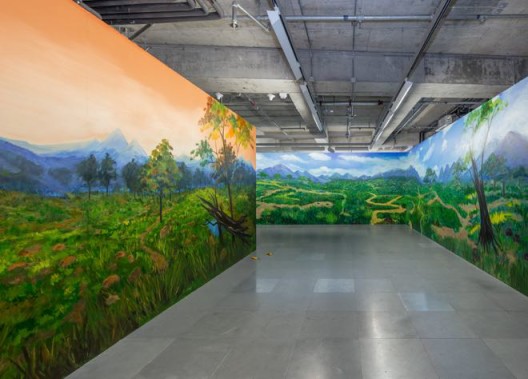
Installation view of Wang Wei, “Two Rooms”, 2015 (At Edouard Malingue Gallery, Hong Kong)
王卫《两个房间》展览现场,香港马凌画廊,2015



